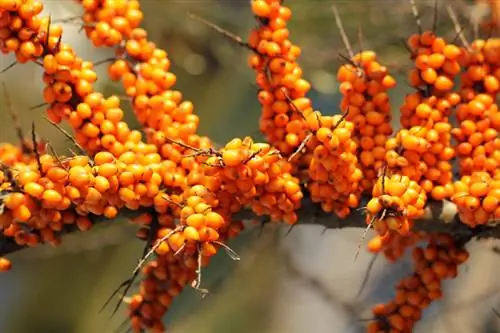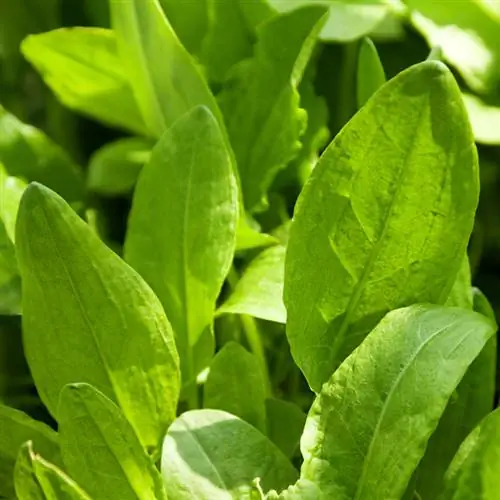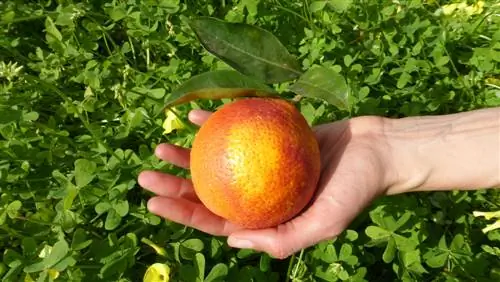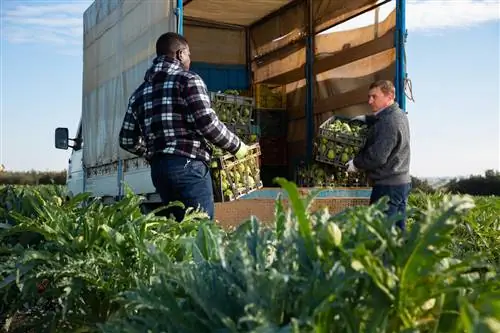- Author admin [email protected].
- Public 2023-12-16 16:46.
- Last modified 2025-01-23 11:22.
In the 17th century, Jerusalem artichokes were considered a delicacy in Paris. The root vegetable was then replaced by the potato, but it is now experiencing a revival. The culture requires little effort and the yields are high for this spreading plant.
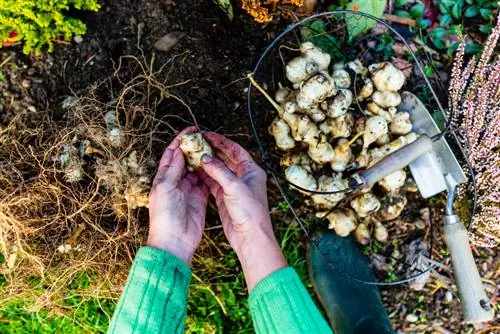
When is Jerusalem artichoke in season?
The Jerusalem artichoke season extends from October to March, with the root vegetable tasting particularly aromatic after frost. Harvesting can take place in the garden from autumn to spring and is made easier by covering the ground with straw and brushwood.
Garden season and growth characteristics
Jerusalem artichoke is a typical winter vegetable that is in season from October to March. The roots taste particularly aromatic after frost and can be harvested in the garden from autumn to spring. To make harvesting easier, you should cover the ground with straw and brushwood. How to prevent the top layer of soil from freezing.
Jerusalem Varieties:
- early varieties: 'Gigant', 'Bianca' and 'Henriette'
- mid-late breedings: 'Waldspindel', 'Medius' and 'Topianka'
- late varieties: 'Dornburger', 'Landsorte Rot' and Violet de Rennes
Development
The sunflower species develops an annual shoot that can branch. The crop blooms from August to November, although the exact date varies depending on the region. In southern countries, the daisy family does not bloom until October, while in Central Europe the flowering period begins in August. The short-day plant develops flowers as soon as the day length falls below a certain limit.
tuber growth
From July to August, the plant invests its energy in developing underground tubers that serve as carbohydrate stores. After flowering, the above-ground part of the plant dies in autumn. The rhizomes overwinter and sprout again next spring.
Claims
Although Jerusalem artichoke is considered undemanding, its vigor depends heavily on the location. Nutrient-poor soils are equally suitable for cultivation as rich substrates. A loose and slightly sandy soil with a pH value between 6.0 and 7.5 that is not prone to waterlogging provides optimal growth conditions.
The crops gratefully accept full sun locations, although they also thrive in partial shade. The above-ground parts of the plant can tolerate low frosts in the single-digit minus range, while the rhizomes in the ground are not damaged even at -30 degrees.
Harvest correctly and increase yields
Depending on the region, the main growth of tubers occurs from July to October. You can harvest the root vegetables between the death of the old shoots and the new growth in spring. The harvest window extends from November to April. To make harvesting easier, cut the stems close to the ground after the leaves have wilted.
Tips for a good harvest
So that the fresh shoots get enough light, remove weeds regularly in spring. In the later stages of development, this measure no longer plays a role, as Jerusalem artichoke grows vigorously and crowds out other plants. By removing the flowers, the plant has a surplus of energy, which causes the tubers to grow about a gram larger. During the growing season you should not shorten the green parts of the plant as this reduces the crop yield. Additional fertilizer applications on nutrient-poor soils increase the harvest.


